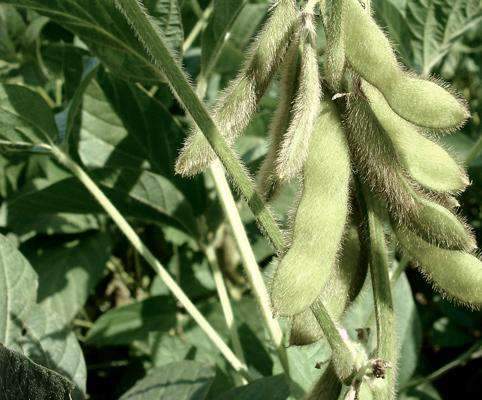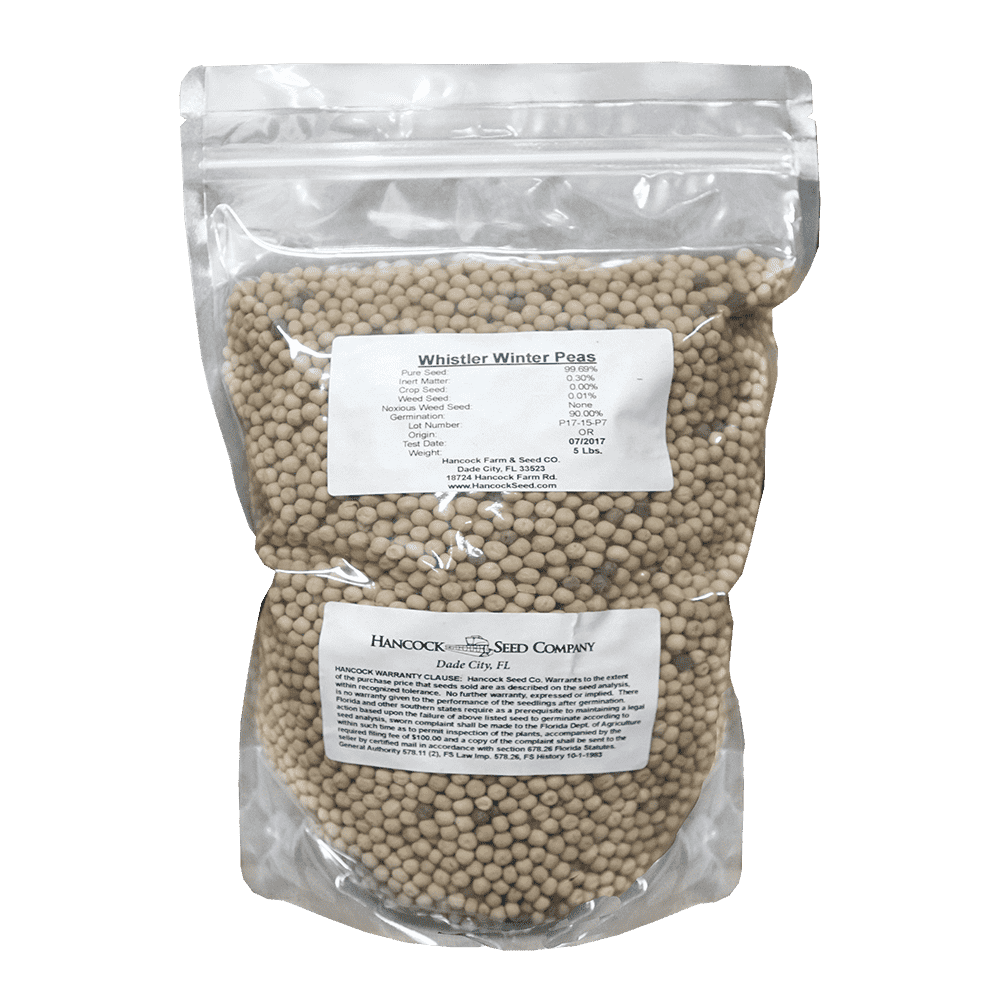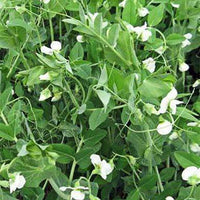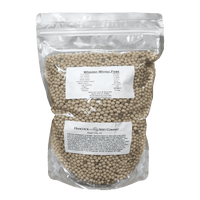
- When to plant:
- Spring, Fall
- Fertilizer:
- 10-10-10 All Purpose Fertilizer
- Seeding rate:
- 50 - 70 lbs. per acre
- Overseeding rate:
- 35 - 50 lbs. per acre
- Seeding depth:
- 1/2 - 1 inch
- Ideal ph:
- 6.0 - 7.0
- Gmo:
- No
- Inoculant needed:
- EL Type Inoculant - Garden Combo
- Coated or raw:
- Raw
- Lifecycle:
- Annual
- Climate zones:
- Cool Season, Transition Zone, Warm Season
Product Information
- Application or Use: Pasture, Food Plot, Livestock Grazing, Cattle Forage, Cover Crop, Erosion Control
- Germination Time: 14 - 21 days, under optimal conditions
- Growing Locations: Warm Season, Transition Zone, Cool Season
- Height: 2 - 4 feet
- Sunlight Requirements: 6+ hours
- Advantages: Offers better taste and digestibility than Austrian Winter Pea.
- When to Plant: Recommended planting time is spring and fall when night time temperatures are consistently below 65 degrees.
Product Details
- High Protein Forage
- Nitrogen fixation and high biomass production
- High platability
- Winter hardy and self-climbing
- Excellent in blends and mixtures
Product Information
Whistler Winter Peas are white flowered, with a very low anthocyanin content (the reddish, purple color on flowers, leaves, and stems). Studies have shown that the lower the anthocyanin content, the higher the palatability of forage. Austrian Winter Peas are purple-flowered, and have a high anthocyanin content. Sweeter feed means higher intake, higher weight gain, and more profits.
*Product packaging may appear different than what is pictured.
Whistler Winter Peas are excellent for nitrogen fixation. Pea seed, properly inoculated, does an excellent job of fixing nitrogen from the air. The bacteria takes nitrogen, binds it with hydrogen from soil water, and forms ammonium, which is a form that is usable by plants. This nitrogen fixation makes Peas a perfect partner with cereals and grasses, which use large amounts of nitrogen, as well as banking nitrogen for future crops through cover cropping and green manure plowdown.
It is common practice to blend several varieties or mix several species together to get complementary performance within the blend. Whistler Winter Peas are excellent in blends with other peas. Being a winter-hardy, semi-leafless pea matches perfectly with spring peas for a quick fall forage, and with standard Pea varieties that have a tendency to lodge and lose forge quality. By mixing Whistler Winter Peas with cereals such as oats, wheat, rye or triticale, you will be adding palatability and high quality protein to your forage. The nitrogen fixing capacity of the peas will be complementary to the cereal forage production.
When choosing to start a new lawn, remove old vegetation by using a de-thatcher, power rake or tiller to kill the existing vegetation. Rake or drag the area to remove debris and dead grass for a clean area. Ensure the soil is leveled and loosened to allow the seed to have good soil contact once spread on a clean seed bed.
If you have an area with heavy weed coverage, we recommend starting fresh by killing and removing the existing vegetation. If you choose to use chemicals, herbicides or fertilizers, you must check with the product's manufacturer prior to planting new seed to ensure the proper waiting period.
When overseeding an existing area, mow your lawn at the lowest setting and bag the clippingsx. Rake or drag any areas that have dead thatch or debris.

Seed Quality
Hancock Seed is dedicated to delivering the best seeds possible to our customers. Hancock Seed grows and harvests many of our products, and we acquire the majority of the rest from other family farmers.
All these seeds are processed, packaged and shipped from Hancock Farm. This helps us ensure that our high standards are met. Unlike much of the competition, we refuse to sell you a seed that was not gathered during the last harvest. You will always receive fresh product from Hancock.
Every seed we grow comes with 40 years of experience behind it...you can rest assured that all of our products are cultivated in a method that assures its potential for growth.

Your cart ( 0 )

Product Information
- Application or Use: Pasture, Food Plot, Livestock Grazing, Cattle Forage, Cover Crop, Erosion Control
- Germination Time: 14 - 21 days, under optimal conditions
- Growing Locations: Warm Season, Transition Zone, Cool Season
- Height: 2 - 4 feet
- Sunlight Requirements: 6+ hours
- Advantages: Offers better taste and digestibility than Austrian Winter Pea.
- When to Plant: Recommended planting time is spring and fall when night time temperatures are consistently below 65 degrees.
Product Details
- High Protein Forage
- Nitrogen fixation and high biomass production
- High platability
- Winter hardy and self-climbing
- Excellent in blends and mixtures
Product Information
Whistler Winter Peas are white flowered, with a very low anthocyanin content (the reddish, purple color on flowers, leaves, and stems). Studies have shown that the lower the anthocyanin content, the higher the palatability of forage. Austrian Winter Peas are purple-flowered, and have a high anthocyanin content. Sweeter feed means higher intake, higher weight gain, and more profits.
*Product packaging may appear different than what is pictured.
Whistler Winter Peas are excellent for nitrogen fixation. Pea seed, properly inoculated, does an excellent job of fixing nitrogen from the air. The bacteria takes nitrogen, binds it with hydrogen from soil water, and forms ammonium, which is a form that is usable by plants. This nitrogen fixation makes Peas a perfect partner with cereals and grasses, which use large amounts of nitrogen, as well as banking nitrogen for future crops through cover cropping and green manure plowdown.
It is common practice to blend several varieties or mix several species together to get complementary performance within the blend. Whistler Winter Peas are excellent in blends with other peas. Being a winter-hardy, semi-leafless pea matches perfectly with spring peas for a quick fall forage, and with standard Pea varieties that have a tendency to lodge and lose forge quality. By mixing Whistler Winter Peas with cereals such as oats, wheat, rye or triticale, you will be adding palatability and high quality protein to your forage. The nitrogen fixing capacity of the peas will be complementary to the cereal forage production.
Instructions
When choosing to start a new lawn, remove old vegetation by using a de-thatcher, power rake or tiller to kill the existing vegetation. Rake or drag the area to remove debris and dead grass for a clean area. Ensure the soil is leveled and loosened to allow the seed to have good soil contact once spread on a clean seed bed.
If you have an area with heavy weed coverage, we recommend starting fresh by killing and removing the existing vegetation. If you choose to use chemicals, herbicides or fertilizers, you must check with the product's manufacturer prior to planting new seed to ensure the proper waiting period.
When overseeding an existing area, mow your lawn at the lowest setting and bag the clippingsx. Rake or drag any areas that have dead thatch or debris.




















